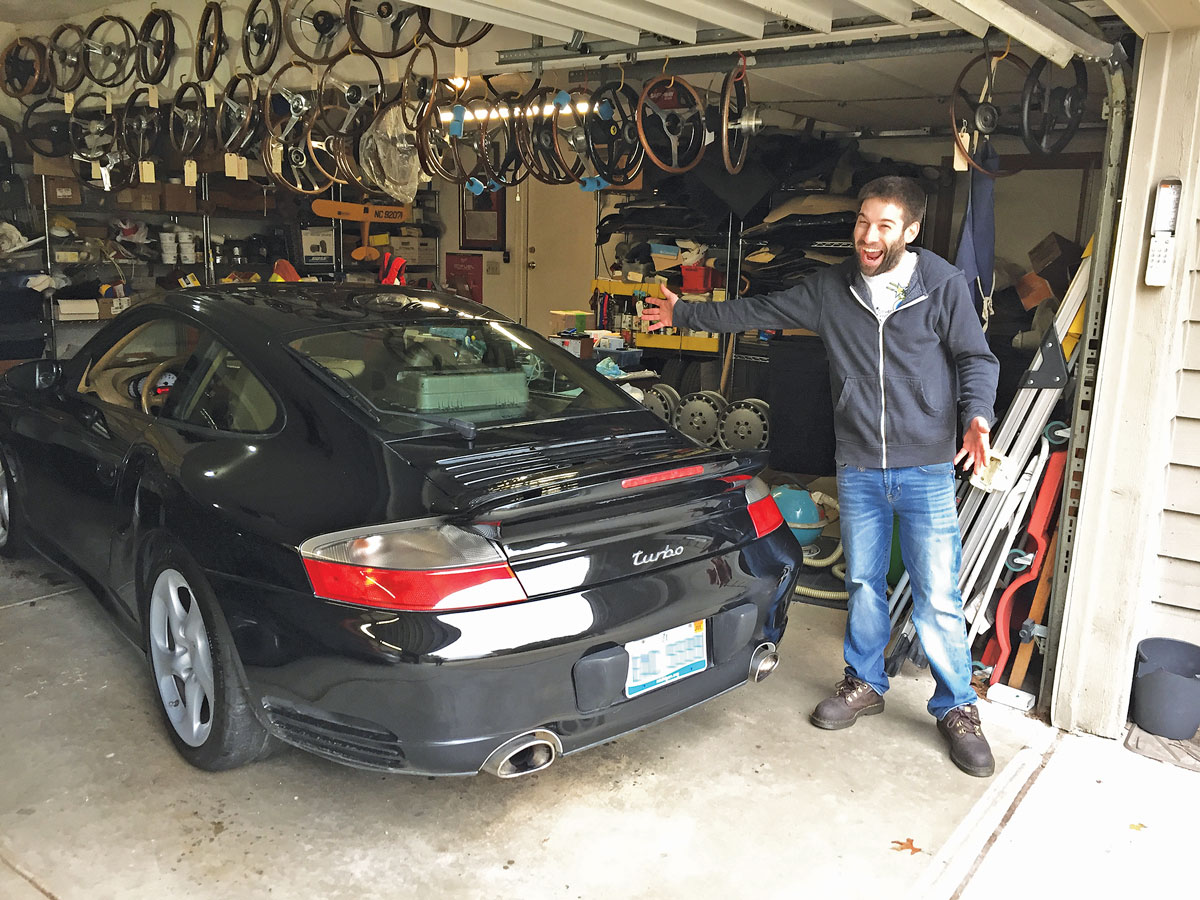
My “poster car” growing up was a silver 2002 Porsche 996. It was actually on a calendar on my bedroom wall. I remember hitting that month and never flipping to the next. Perhaps it was because my dad is a Porsche enthusiast, or maybe that car was just special. In any case, that’s the one I wanted.
Budget reality meant otherwise. I found myself driving, maintaining and enjoying a long stream of Subaru WRXs and STIs. But after five years of applying my engineering degree working in the automotive industry, I was ready to find the car of my dreams.
Sight unseen
A year of searching produced a cosmetically challenged black 911 Turbo with 63k miles on eBay. When I phoned the Southern California owner, he had some good answers to my questions — and some not-so-good ones. Yet the price seemed right at $36k, so I took the leap, buying the car sight-unseen except for a few poor-quality photos.
Upon its arrival in Michigan on a snowy January day, I drove the car for the first time. It was not what I expected, exhibiting unusual engine “sounds.” Online Porsche forums told me that the Mezger engines were known to be loud, so I disregarded the clatter.
But after my first full summer of enjoyment, a more pronounced noise developed. A mixture of chirping and intense grinding, in one of my Subarus I would have immediately described it as catastrophic engine damage indicating a spun rod bearing. I feared the worst and put my Porsche in the timeout spot for a week.
Going beltless
After some thinking, I had an idea: If I removed the serpentine belt, I could listen and pinpoint it to an internal engine noise or (hopefully) one of the accessories. With the belt off, I noticed a new sound, one I had not heard before. It was that classic 911 flat-6 “whir!” I had found my issue — a bad water pump driven by the serpentine belt.
A huge weight lifted, and I started planning. It turns out that to replace the water pump required lowering the drivetrain by six or so inches. No problem, right? On a brisk fall morning, I painstakingly lowered my engine inch by inch, praying that I wouldn’t stretch or break anything. Porsche makes it easy to work on these cars, other than having to do most everything from below. I decided to change the coil packs and spark plugs while I was in there. The job went well, and I had my dream car back.
With this behind me, the ownership experience was transformed. My daily driver was now a smooth and sleek sports car. Only one issue started to bug me — the 911 was black and my poster car was silver. I began casually searching again.
Second time around
A silver Turbo popped up in New York City, one with considerably more miles, around 100k. But the highly rated shop that inspected it claimed it was a gem. After some negotiations I bought the car, this time at $32k, again in the middle of winter.
This one was different in many ways. It had more miles, so some small things were broken, such as window regulators, cup-holder plastics and interior bits. On the bright side, it had better options and all its original paint, which was important to me, as the black car had been somewhat haphazardly touched up.
Summer arrived again, so I could really enjoy the car, but I noticed it didn’t feel as quick as the black one. Did I really sell my Turbo to get this dog? Then, during a weekend with my brother in town to visit, things began to go awry. The turbo went from building mild pressure to skyrocketing up to 1.5 bar! That’s over 20 psi of boost, which is way too much. While my brother was enjoying the abundant push, I was uneasy in the passenger’s seat, wondering how much damage we may be doing.
A few days later, things went from bad to worse, as I started to experience tell-tale signs of a charging-circuit issue. Knowing the battery was a nearly new Bosch AGM, my thoughts immediately turned to the alternator. But not before the car stranded me on the side of the highway, providing lots of time to think.
Porsche OEM alternators are famously expensive, but the Bosch voltage regulator is a sub-$50 part. It was a somewhat easy job which didn’t require lowering the drivetrain, but rather a lot of poking around the top of the engine. Once the job was complete, I had good charging voltage. However, the erratic turbo-boost issues didn’t go away.
If a Porsche were a Subaru
If this were a Subaru, it would be a boost-controller problem. So I did some research and found 911 owners having issues with an easy-to-change “N75 valve,” which acts as a boost controller. These electronic solenoids stick when they get old, so I hoped maybe this was my problem. The part is suspiciously cheap at $25, but upon its installation, the car was back to how it should have been, driving much like my black one.
Owning two 996 Turbos has tested me with entirely different worries and problems. The learning alone has been worth it. Enjoying my 911 on a back road with my windows down and sunroof open one day and on my way to work with the a/c cold and a working cup holder on another is just what I imagined when dreaming about my poster car all those years. ♦